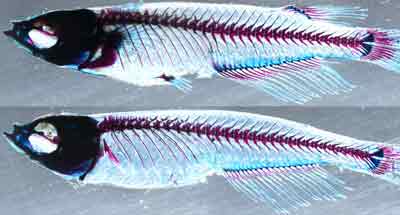Genetic Analysis Uncovers the Evolutionary Origin of Vertebrate Limbs

Media Contact: Matt Wood, The University of Chicago Medicine
773-702-5894 | Matthew.Wood@uchospitals.edu
A new study co-authored by Neil Shubin, Interim Co-Director of the Marine Biological Laboratory, finds modern-day vertebrates share the toolkit that formed the dorsal fins of fishes
CHICAGO -- As you picture the first fish to crawl out of primordial waters onto land, it’s easy to imagine how its paired fins eventually evolved into the arms and legs of modern-day vertebrates, including humans. But a new study by researchers from the University of Chicago and the Andalusian Center for Development Biology in Spain shows how these creatures used an even more primitive genetic blueprint to develop their proto-limbs: the single dorsal, or back, fin common to all jawed fish.
The study, published this week in Nature Genetics, demonstrates that fish, mice and likely all modern-day vertebrates share genetic elements first used to develop the unpaired dorsal fin in ancient fish. They later copied these elements to produce paired appendages, like pelvic and pectoral fins, arms and legs.
 Top: A medaka fish with normal dorsal and paired pectoral/pelvic fins. Bottom: When the ZRS and sZRS enhancers are knocked out, the fins do not develop normally. (Credit: Shubin, Gómez-Skarmeta, et al)
Top: A medaka fish with normal dorsal and paired pectoral/pelvic fins. Bottom: When the ZRS and sZRS enhancers are knocked out, the fins do not develop normally. (Credit: Shubin, Gómez-Skarmeta, et al)“The unpaired dorsal fin is the first one you see in the fossil record,” said Neil Shubin, PhD, the Robert R. Bensley Distinguished Service Professor of Anatomy at UChicago and co-author of the new study. “Here we show that the genetic mechanisms that pattern all the fins and other paired appendages originally arose there and were redeployed to others.” Read more about "Genetic analysis uncovers the evolutionary origin of vertebrate limbs".